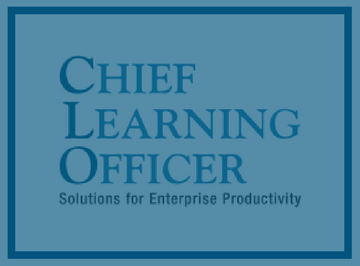Higher Education Needs Higher-Level Tech
Higher Education Needs Higher-Level Tech
January 13, 2016
Learning is a lot like golf. If you want to excel, pair up with someone better than yourself.
Here’s how that applies to learning technologies: In most cases, corporations are far ahead of higher education in experimenting with, deploying and using learning technology. So I encourage university presidents to open their doors to chief learning officers.
I’m also asking those technologically advanced companies’ CLOs to make the time to walk through that door. It will help both parties succeed. Corporate CLOs can bring proven technologies to increase a school’s revenue stream and enhance the student learning experience. Better prepared students turn into quality workers.
To kick off 2016, I asked a few experts what they would like to see from higher education. I’m bookending this wish list with three things CLOs can do to help higher education take its technology game to the next level.
When asked for his wish list, Geoffrey Colvin — author of “Talent Is Overrated: What Really Separates World-Class Performers From Everybody Else” and senior editor at large for Fortune magazine — said, “The learning technology I’d most like to see higher education adopt is high-fidelity, real-time, team-based simulations.
Some schools use these already, but many more would benefit by doing so. They powerfully develop the skills of collaboration, which are increasingly important and are rarely trained.”
When asked what he would like universities and colleges to embrace, Justin Lombardo, chief learning officer for Baptist Health, said, “I think the technology that offers the best opportunity is simulation technology. Many institutions of higher learning use simulation, but they use it for narrowly focused exercises.
“If they explored the full range of simulation possibilities,” Lombardo said, “they would recognize greater opportunities to integrate knowledge, advance critical thinking and improve leadership skills such as teamwork.”
David Strainick, global head of learning for NCR Corp., hopes to see higher education widely adopt “3-D simulations, gesture-based simulation and game-based learning.”
Some of these concepts may even be new to corporate CLOs. For example, to understand Strainick’s wish for gesture-based simulation, think about studying a chemical compound such as water by reading about it in a textbook. With a gesture-based simulation, a student can pick up a virtual water molecule, examine the hydrogen and oxygen atoms, and turn the compound in a circle to see its different bonds.
It’s not that higher education is filled with Luddites. It’s quite the opposite. For instance, at Ohio University’s Language Resource Center, students have been using a “holodeck” to interact and work within a space created by images. Higher education is at the forefront of much technology. Rather, these experts want to see universities deploy and use learning technologies on a wider scale.
Remember the words of American humorist Will Rogers: “Everybody is ignorant, only on different subjects.” So bring your expertise to the university door with a dash of humility and be willing to learn, too.
Here are three things CLOs can do to help higher education ratchet up the use of higher-level technology and develop tomorrow’s workforce today:
- Make contact with a president or provost — a chief academic officer — from a local college or university. Ask them to connect you and your learners with the right part of their institution to engage with you.
- Be clear about the certifications, certificates and competencies you want from higher education, and partner with a school to build out a curriculum.
- Work with a larger group of CLOs to develop a common core curriculum that would be relevant to all of you. If your company already belongs to a consortium of companies, pull together a cogent, concise set of requirements your companies need to develop future talent.
Savvy CLOs know where their industries and companies are headed. They have a much better vision of this than a university dean will have. The dean and university president, and to a much larger extent higher education as a whole, however, have to produce tomorrow’s workers. This is learning leaders’ chance to help everyone graduate to the next level.

This column was originally published in CLO.